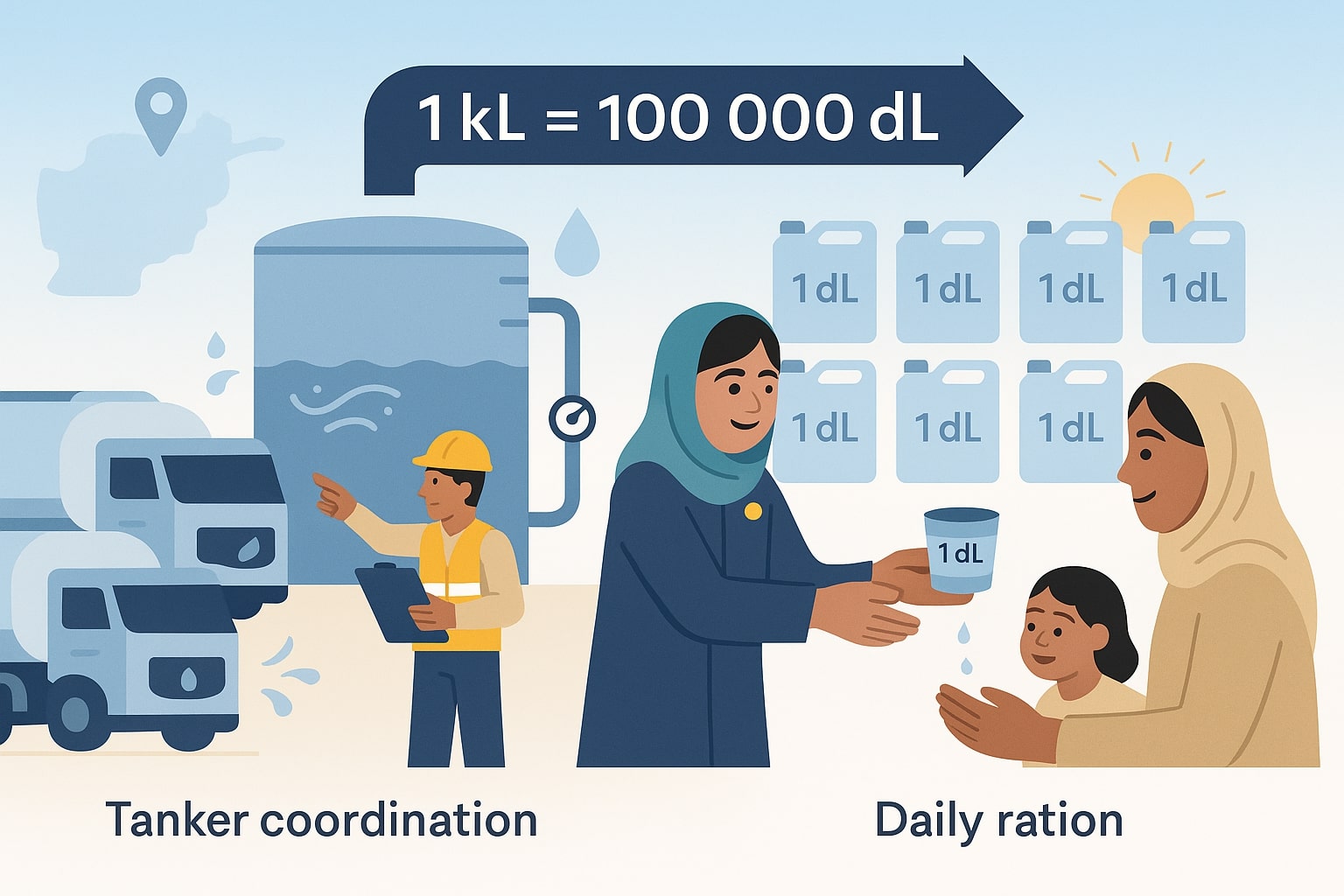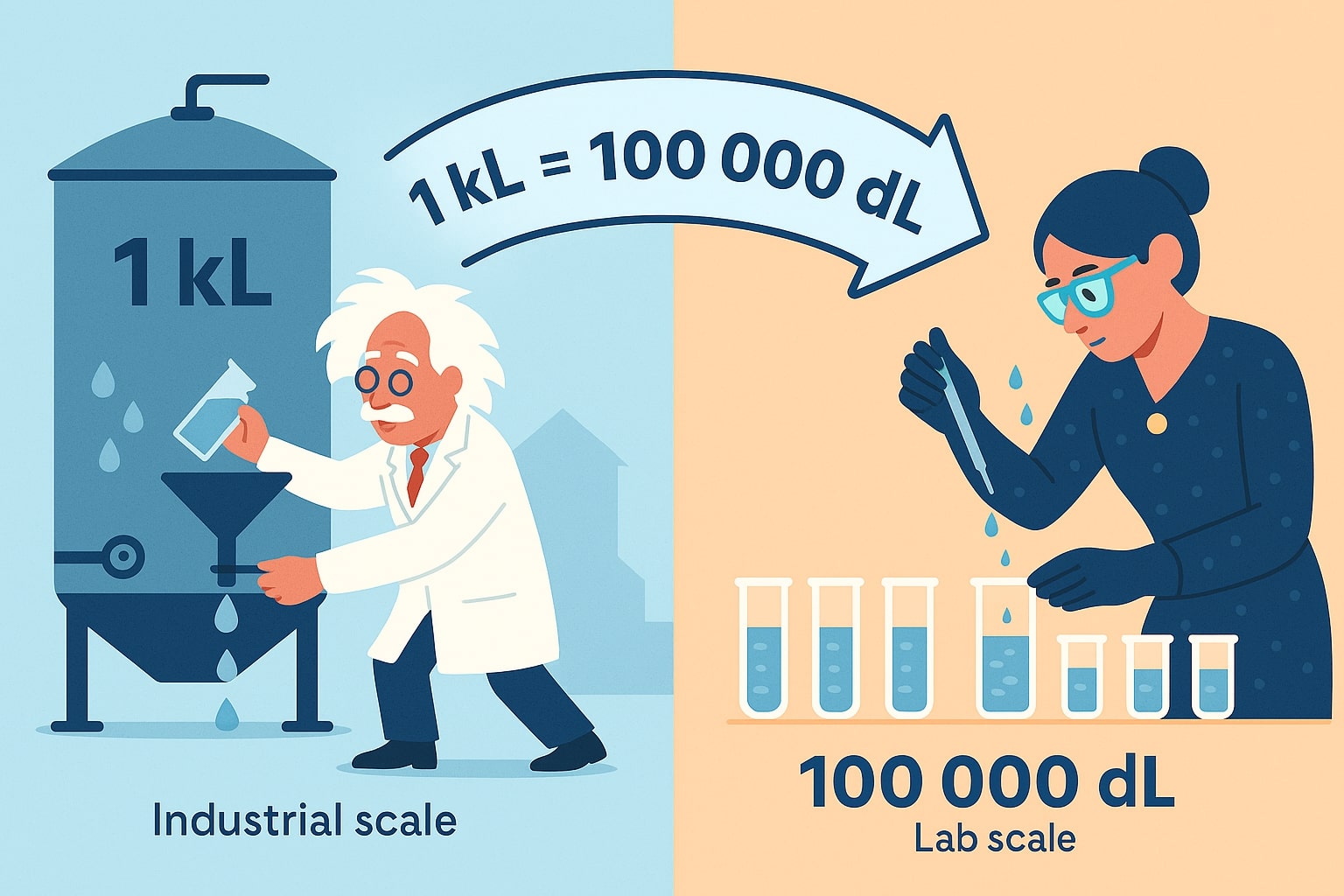Kiloliter to Deciliter – How to convert kL to dL
Need to switch kiloliter to deciliter? These two metric units might sound unrelated, but they’re part of the same system. One tracks huge liquid volumes – like water tanks or fuel reserves – while the other handles moderate, human-friendly quantities. Converting between them is easy, but understanding where they’re used and why can make the numbers more meaningful. Below, we’ll cover the math, share facts about these units in the real world, and even highlight a historical use case where both mattered.

What is a kiloliter (kL)?
A kiloliter is a large metric unit of volume, equal to 1,000 liters. It’s often used for municipal water supplies, agricultural irrigation, and industrial fluids like chemicals or fuels.
Many countries use kiloliters to track household water usage, since it’s easier to bill a family for “15 kL” per month than to say “15,000 liters.” For businesses, kiloliters make it easier to report bulk volumes without resorting to enormous figures.
What is a deciliter (dL)?
A deciliter is a smaller metric unit, equal to 0.1 liters (100 milliliters). It’s popular in European recipes, beverage labeling, and nutritional data because it simplifies mid-sized measurements.
Deciliters are especially common in Sweden, Norway, and Finland, where cookbooks often prefer them over milliliters for readability and easier scaling of portions.
How to convert kiloliter to deciliter
Because both units are tied directly to liters, the formula is simple:
1 kiloliter = 10,000 deciliters (1 kL = 10,000 dL)
To convert:
Deciliters (dL) = Kiloliters (kL) × 10,000
Example: If a municipal tank contains 40 kL of treated water:
40 × 10,000 = 400,000 dL
For quick results without the arithmetic, use our Volume Converter or check out other Conversion tools.
Did you know?
-
Water usage metrics: Australia and South Africa both bill household water consumption in kiloliters, but consumer water-saving appliances (like kettles or taps) are often rated in deciliters per minute for efficiency testing.
-
Historic brewing records: In the 19th century, breweries in Belgium tracked production in kiloliters for exports, but used deciliters internally to standardize taste-testing and batch adjustments, ensuring recipes stayed consistent across huge operations.
-
Environmental monitoring: Researchers measuring river flow often report annual discharge in kiloliters for regional data, but laboratory studies testing pollutant concentrations will break those same volumes down to deciliters for precise chemical testing.
-
Medical logistics: During humanitarian crises, aid agencies like the Red Cross record bulk water shipments in kiloliters for distribution planning, but break down rations per person in deciliters for daily survival kits.
How These Units Helped Coordinate Crisis Relief
In 2010, following severe flooding in Pakistan, relief organizations had to manage both bulk water delivery and individual rations. According to a report published by UNICEF, supply chains documented shipments in kiloliters to coordinate tanker trucks and reservoirs. At the same time, aid workers distributed clean water to families using hand-held containers measured in deciliters, ensuring consistent daily portions.
By converting between these two scales seamlessly, teams could plan effectively at both the macro and micro levels, preventing shortages and maintaining fair distribution across thousands of displaced families.

Wrapping It Up
Converting kiloliter to deciliter is as simple as multiplying by 10,000, but these units serve very different purposes – one for large-scale logistics, the other for consumer or lab-level precision. Knowing how to move between them can make planning, reporting, and analysis far easier, whether you’re in public works, food production, or research.
For quick, hassle-free results, try our Volume Converter or explore other Conversion tools to simplify every conversion.

